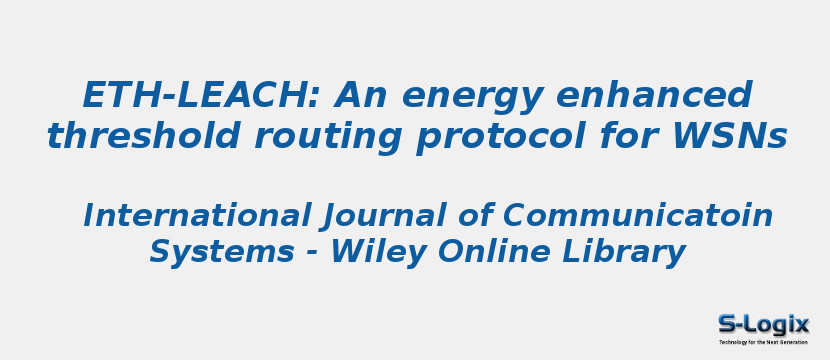Research Area: Wireless Sensor Networks
Many wireless sensor-based applications use LEACH as a preferred routing protocol owing to its unique features such as optimal sleeping time, minimum packet collisions, dynamic channel selection, and least power consumption. The traditional LEACH protocol wastes the transmission opportunities as it processes data only in an event occurring, leading to wastage of resources. To resolve this issue, this paper proposes a more robust Energy Enhanced Threshold Routing Protocol (ETH-LEACH) for WSNs. The working of ETH-LEACH is conceptualized in two parts. In the first part, TDMA is implemented to estimate the opportunistic paths to remove network overhead. Furthermore, in the second part, a threshold value is calculated for choosing the forwarder nodes. The proposed technique minimizes the energy usage of the sensor nodes and consequently enhances the networks lifetime by extending the duration of node death. The ETH-LEACH protocol is contrasted with the different variants of LEACH to verify its effectiveness. The experimental results show that the proposed ETH-LEACH protocol outperforms the traditional routing protocols. In this paper, the ETH-LEACH protocol performs nearly 54.6% efficient than LEACH, 47.6% efficient than Q-LEACH, 41.3% efficient than NR-LEACH, 33.6% efficient than LEACH-GA, and 29.7% efficient than LEACH-POS in reducing the usage of energy in the overall simulation.
Keywords:
Author(s) Name: Prem Kumar Chithaluru, Mohammad S Khan, Manoj Kumar, Thompson Stephan
Journal name: INTERNATIONAL JOURNAL OF COMMUNICATION SYSYTEMS
Conferrence name:
Publisher name: Wiley
DOI: 10.1002/dac.4881
Volume Information: Volume34, Issue12 August 2021
